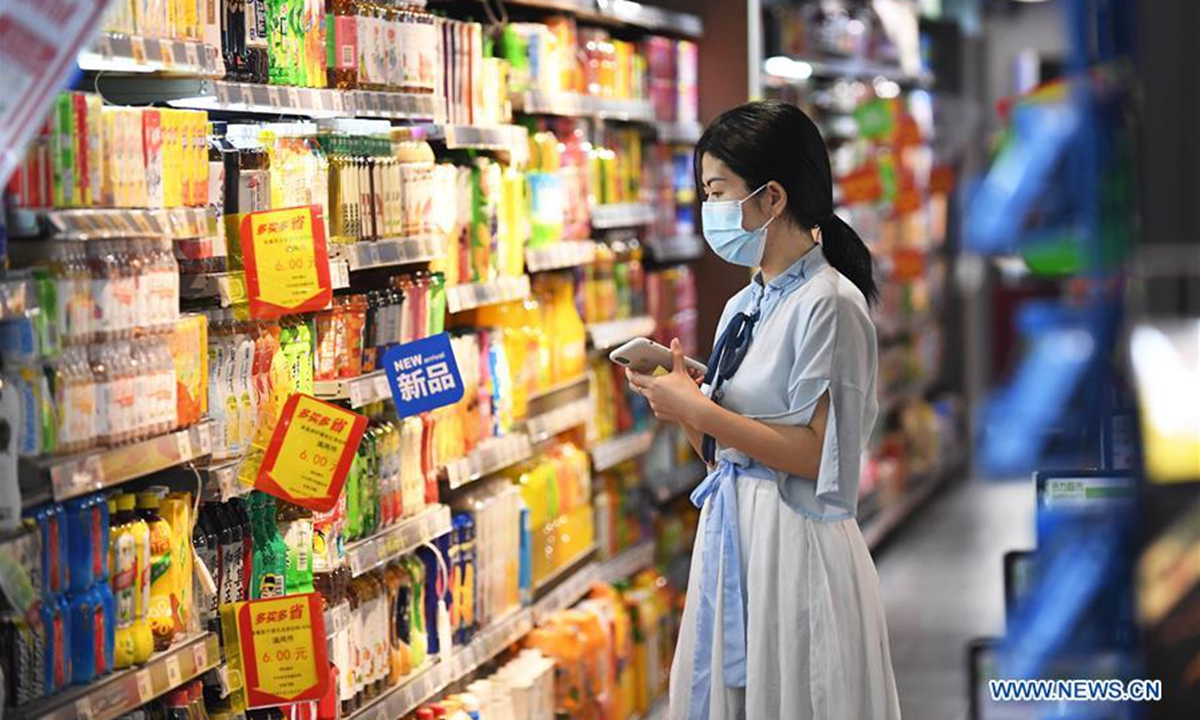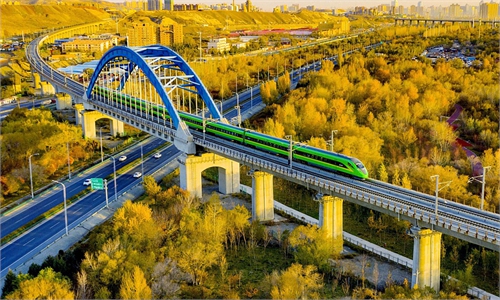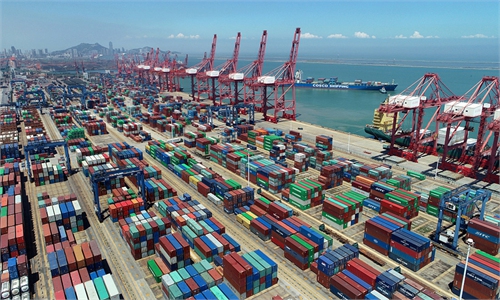
A customer selects drinks at a supermarket in Guiyang, southwest China's Guizhou Province. Photo: Xinhua
China's retail sales witnessed positive growth after a consecutive two-month decline, and officials forecast that it will maintain an upward trend in the second half of this year, reflecting China's consumption power shrugging off the impact of epidemic.
China's retail sales expanded 3.1 percent year-on-year in June, data from the National Bureau of Statistics (NBS) confirmed on Friday, after a drop of 6.7 percent in May, and a decline of 11.1 per-cent in April.
In comparison, total retail sales of consumer goods came in at 21 trillion yuan ($3.11 trillion) in the first half of this year, a year-on-year decrease of 0.7 percent, of which retail spending in the second quarter declined by 4.6 percent year-on-year.
Although retail sales in the first half of this year fell by 0.7 percent, market sales have been gradually picking up, driven by stimulus policies implemented from May, together with more positive signs in June, Fu Linghui, a spokesperson from the NBS said.
Fu said the growth rate of retail sales for nearly 90 percent of commodities in June rebounded from the previous month, with growth of cosmetics and communication equipment increasing by 8.1 percent and 6.6 percent respectively.
Stimulus policies for key industries such as vehicle manufacturing also triggered a sales rebound, Fu added.
It is not easy to see positive growth, given the fact that retail sales in June last year were also booming, Tian Yun, former vice director of the Beijing Economic Operation Association, told the Global Times on Friday, explaining that vehicle sales is an important driving force behind consumption growth in June.
Recently, China has unveiled a range of stimulus policies to revive the auto market and stimulate consumption, including halving the car-purchase tax for passenger vehicles priced lower than 300,000 yuan and with 2-liter engines or smaller, effective from June 1 to the end of the year.
Analysts said the automobile and home appliance industrial chains have a long tail, which can drive the development of a series of upstream and downstream industries such as steel, chemical industry, electronics, and infrastructure, and further solve employment, which is the focus of boost-ing consumer spending.
Catering revenue in June fell by 4 percent year-on-year, and the decrease was narrowed down by 17.1 percentage points from the previous month, which shows "spending on catering improving," according to Fu.
Fu highlighted that some regions such as Shanghai and Jilin which have been hurt by the epidemic have witnessed a fast rebound in spending, which also contributed to the total growth in retails.
To stimulate the consumption, many cities have been issuing consumption coupons. According to a report by the National Business Daily, China's 10 major consumption centers, including Shanghai, Beijing and Guangzhou, have collectively issued nearly 7-billion-yuan worth of consumption coupons since April.
Although the consumption recovery is still facing constraints such as a slowdown in the growth of individual incomes and limited spending opportunities, China's consumption scale is expanding, and is expected to maintain a sustained recovery, Fu said.
Tian warned that the recovery of the housing sector is a big challenge to see a further retail growth in the second half of this year, especially homebuyers in several cities have stopped paying their mortgage, which poses a risk to the economy and financial institutions.
Global Times


